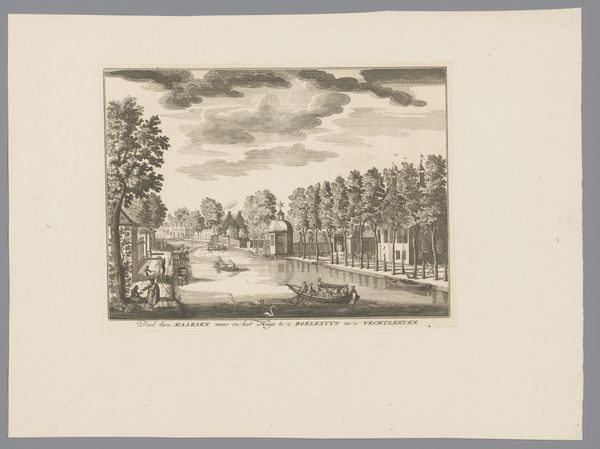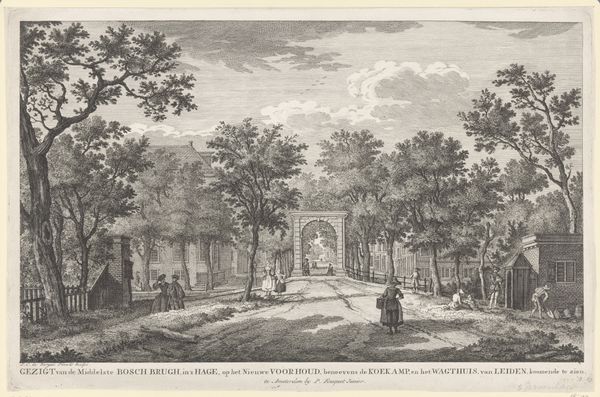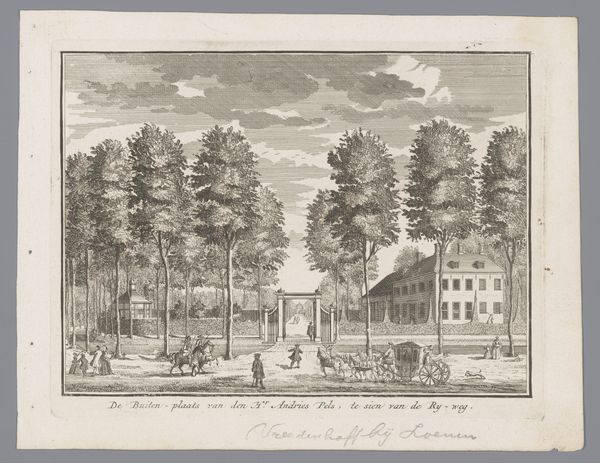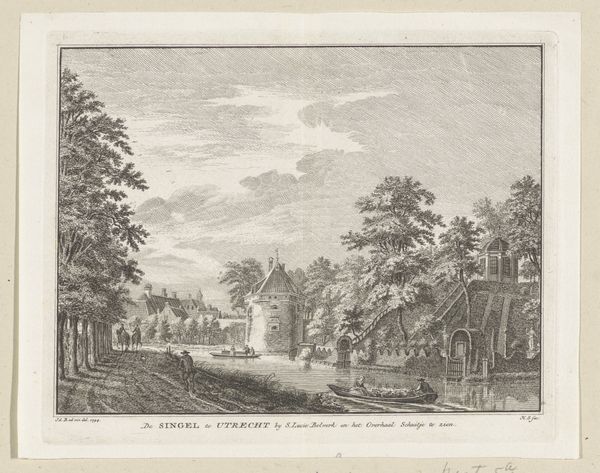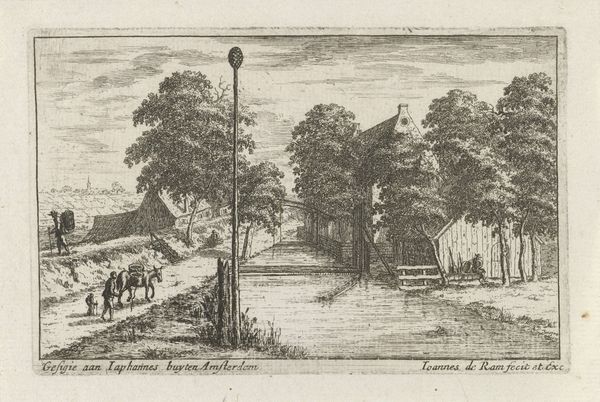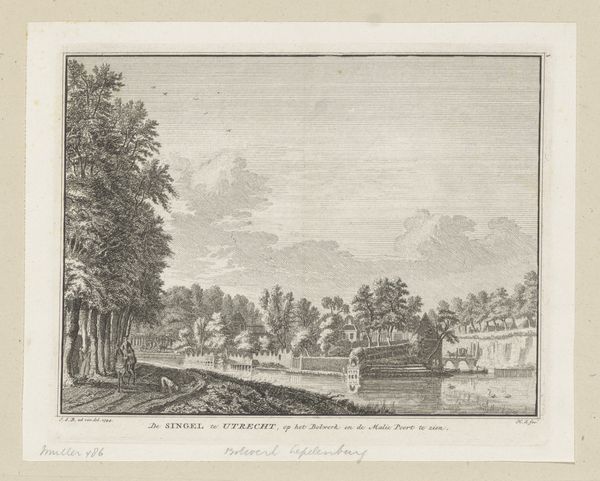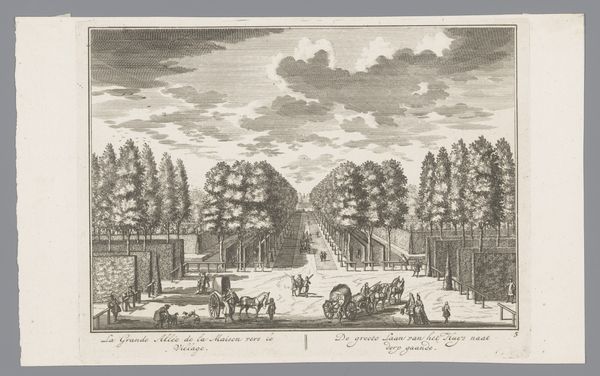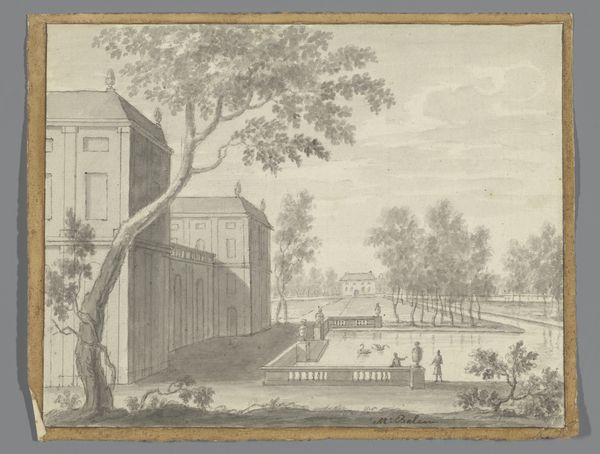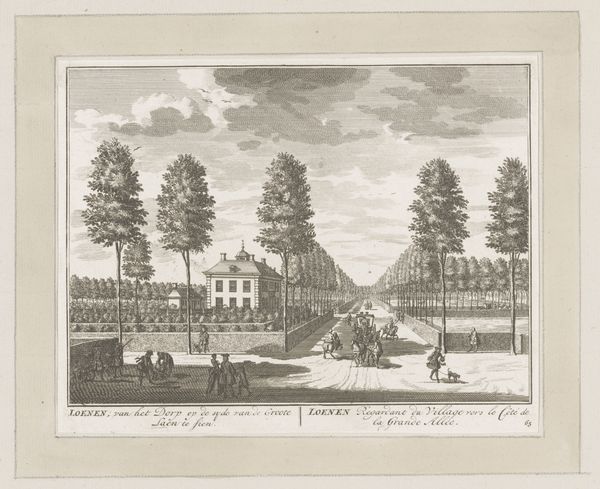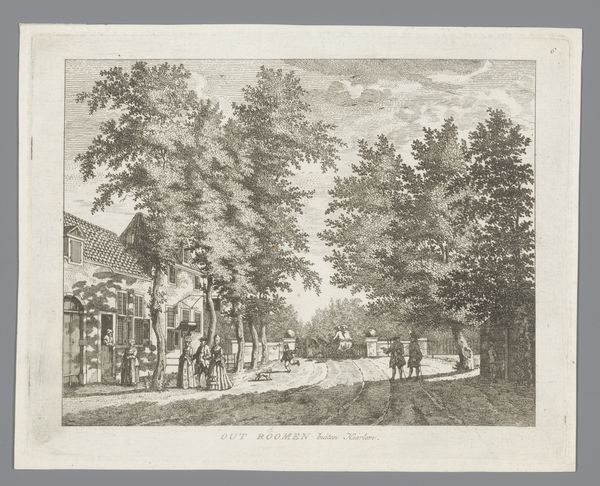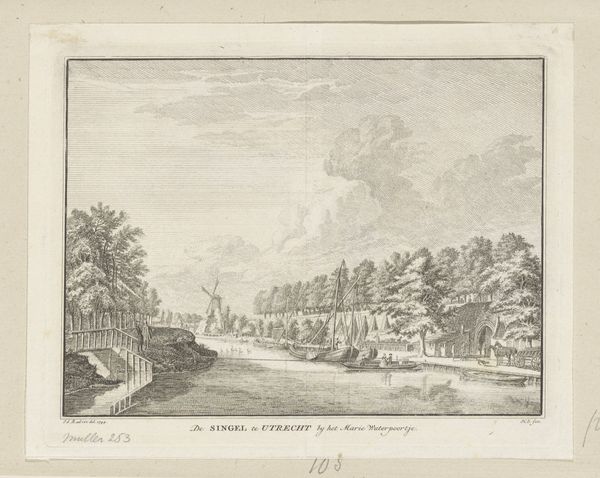
Fotoreproductie van een prent van een vooraanzicht van de hofstede Spruitenbosch te Haarlem door Hendrik de Leth 1900 - 1930
0:00
0:00
anonymous
Rijksmuseum
print, engraving
# print
#
landscape
#
cityscape
#
engraving
Dimensions: height 172 mm, width 221 mm
Copyright: Rijks Museum: Open Domain
Editor: Here we have a photo reproduction of Hendrik de Leth's print, "Fotoreproductie van een prent van een vooraanzicht van de hofstede Spruitenbosch te Haarlem," dating between 1900 and 1930. It’s an engraving of a stately home and looks quite idyllic, almost like a stage set. What strikes you most about this piece? Curator: This image is fascinating, particularly when we consider the socio-political dimensions inherent in depictions of leisure and property. This print reproduces an image of wealth, but it also highlights the ways in which land ownership and its aesthetic representation have historically been tools of power. Who owned this "lustplaats"? And what was the social context that allowed them to possess and display it so prominently? Editor: The inscription mentions Marcus Bavelaar as the owner. Does the landscape style itself contribute to that display of power? Curator: Precisely! The "landscape" style here isn't just a neutral observation; it's a constructed view, designed to communicate control and privilege. The carefully arranged trees, the imposing architecture—they speak volumes about the owner's status. Consider how access to such "pleasure places" was, and often still is, dictated by social hierarchies. In what ways does this image either challenge or re-inscribe power structures? Editor: I hadn't thought about the landscape itself as a statement. The deliberate arrangement feels almost like propaganda now. Curator: Indeed. And the reproduction in the early 20th century, during a period of significant social change, adds another layer. It begs the question, who was consuming this image then, and what did it represent to them? Nostalgia? Aspiration? A reminder of an unequal past? Editor: So, by examining its historical context, what appears at first glance to be a simple landscape reveals itself to be a potent symbol of social and economic dynamics. It shows how art preserves dominant views but also provides ways of challenging it. Thanks for the fresh perspective. Curator: It is precisely by questioning these seemingly neutral representations that we can better understand how power operates. Thanks for engaging in a richer analysis.
Comments
No comments
Be the first to comment and join the conversation on the ultimate creative platform.
